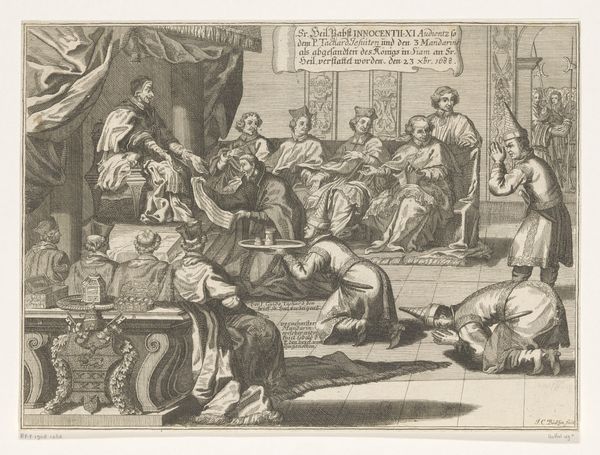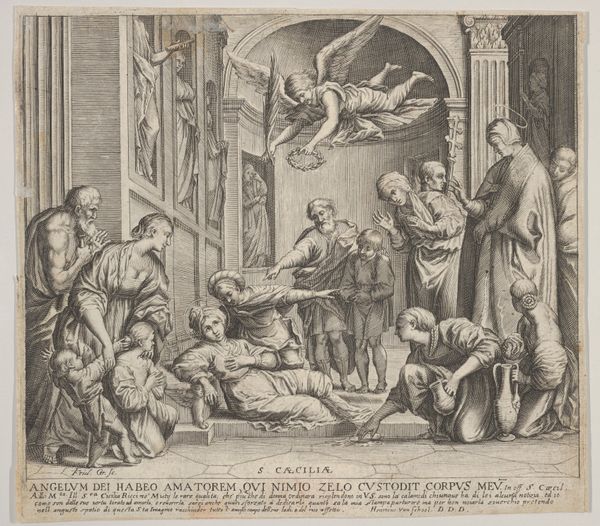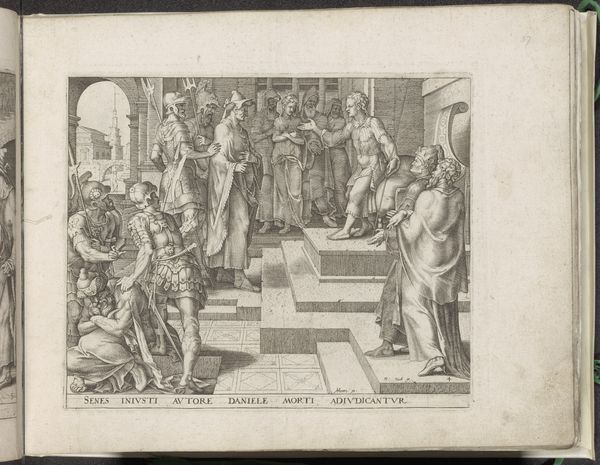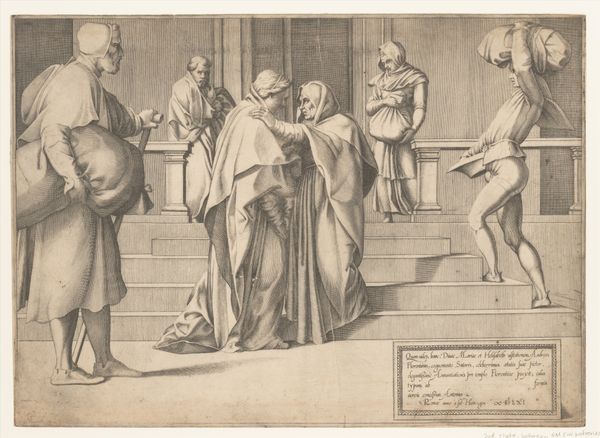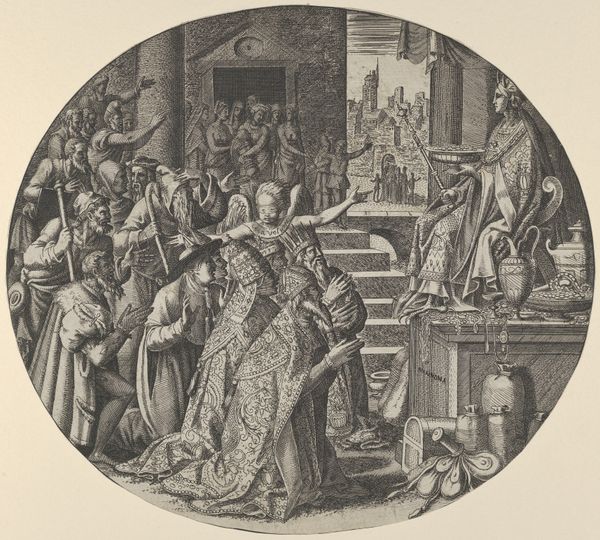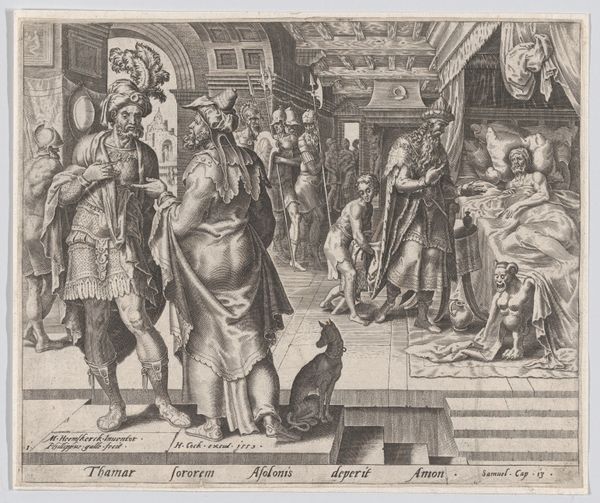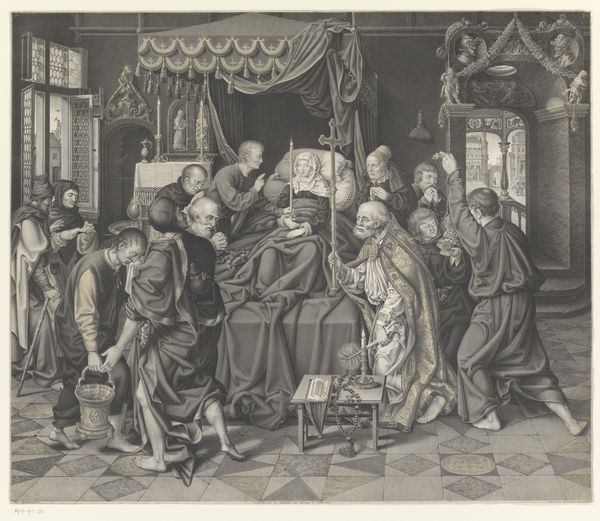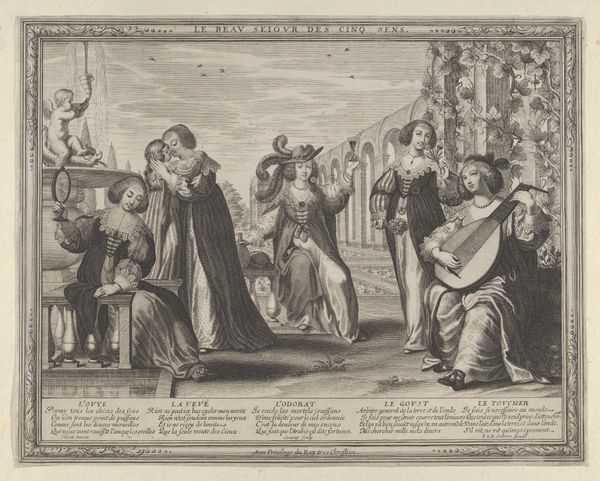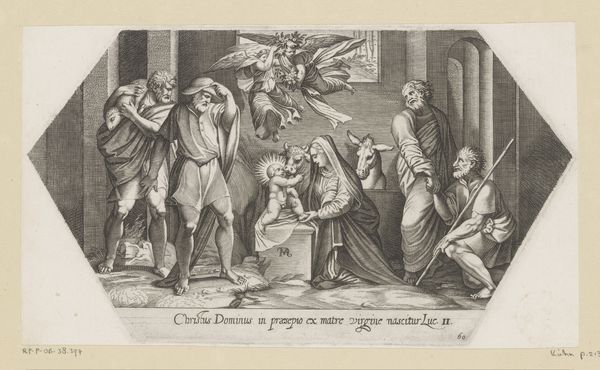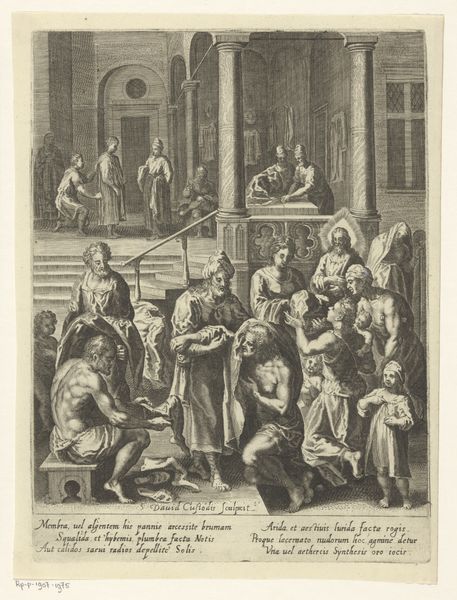
print, engraving
# print
#
old engraving style
#
figuration
#
11_renaissance
#
history-painting
#
italian-renaissance
#
engraving
Dimensions: height 356 mm, width 436 mm
Copyright: Rijks Museum: Open Domain
Curator: This engraving, titled "Presentatie van Christus in de tempel," dating from after 1597, presents a familiar biblical scene. The level of detail is really striking here, wouldn’t you say? Editor: Indeed. It is intricate. And rather formal and staged, wouldn’t you agree? There’s an undeniable air of ceremony, of rigid social hierarchy baked right into its very structure. Curator: Absolutely. Notice the linear precision, the stark contrasts between light and shadow creating depth, which adds to its dynamic composition. We are looking at a beautiful print of a scene from Italian Renaissance art. Editor: Yet what interests me most are the unacknowledged power dynamics inherent in the story itself: Mary, a young mother, literally presenting her child before an institution… the embodiment of patriarchal power. I think it's telling how the composition directs our gaze primarily to those in power. Curator: I would say that that's your interpretation, certainly. But look at the texture, how the engraver manipulated line weight to create the illusion of fabric and flesh. I see a commitment to representational accuracy here, a mastery of form for its own sake. The building interior gives the subjects of the presentation space, making them feel not just symbolic but realistically depicted as human. Editor: But "accuracy" isn't neutral; representation is always loaded with choices that reflect and reinforce particular worldviews. What about the role of religion itself? In Renaissance Italy, religious institutions shaped societal roles in a manner we’d deem highly unjust by contemporary standards. This piece becomes less a testament to faith and more a document reflecting that time. Curator: A document certainly, but one elevated to art through technical brilliance. I can get lost just looking at how light reflects. What do you think an audience gets out of experiencing a Renaissance Italian print today? Editor: Hopefully, more than just aesthetic pleasure! By grappling with the historical context, we might better understand how the echoes of that era still resonate in our own. It calls for a close examination of who has been historically elevated versus who was subjugated. Curator: And perhaps, appreciating technical execution, too? There is room for both. Editor: Of course, of course. A fruitful pairing.
Comments
No comments
Be the first to comment and join the conversation on the ultimate creative platform.

